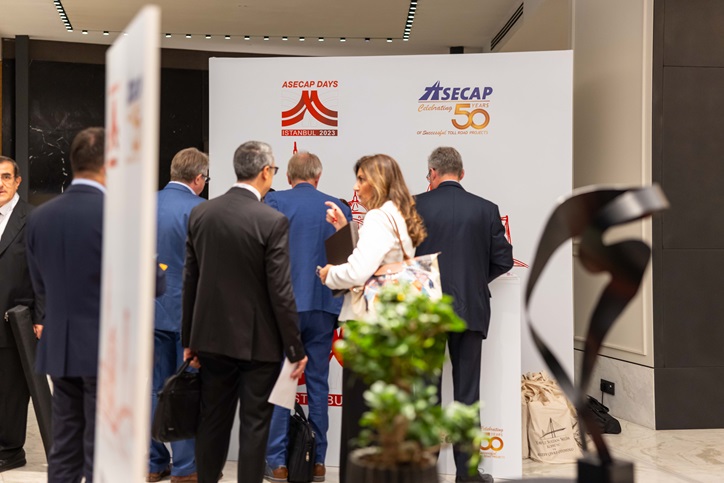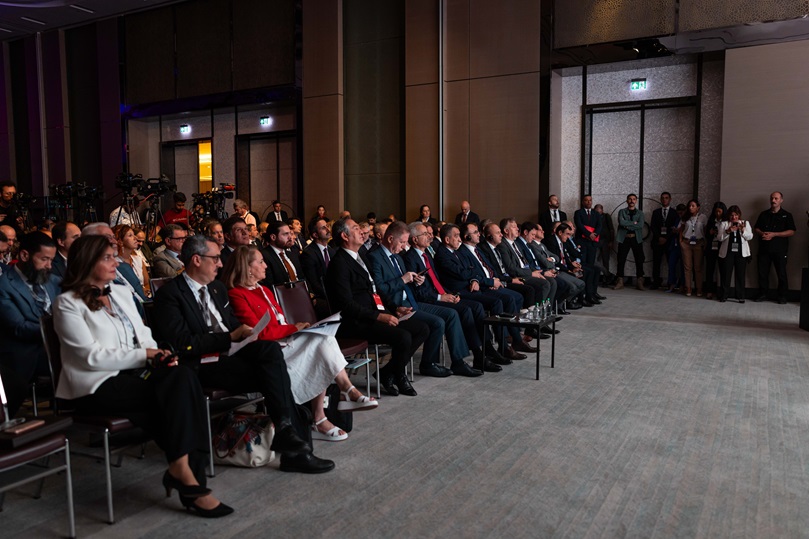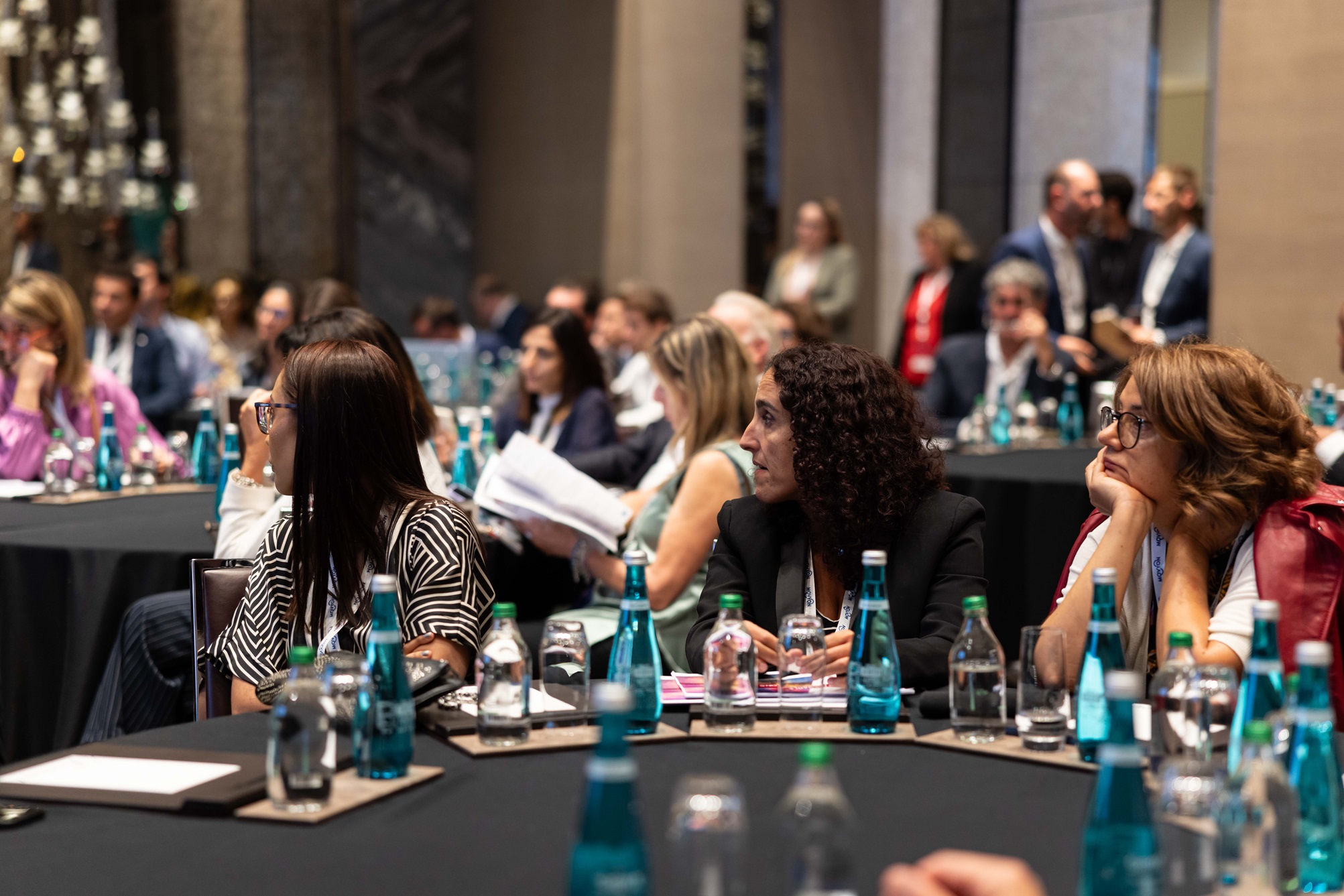
We are “collecting vast amounts of valuable data, but not doing anything valuable with it,” delegates at this year’s Asecap Days conference were told. “There must be a better way,” said Emil Sylvester Ramos, CEO and co-founder of the Iris R&D Group.
Speaker after speaker at the event in Istanbul returned to the theme of getting more out of the data that is being collected by the world’s leading highway operators. A huge profit opportunity is being overlooked.
Ramos talked about his company’s IrisGo platform, which can collect data automatically then transmit it to administrators utilising the IrisCity cloud reporting platform.
The resulting data flow includes integration with existing customer data platforms and allows administrators “to visualise [problems] and make data-driven decisions based on the need and location”.
Ramos wants to see the industry adopt solutions like this to make faster high-quality decisions, “whether it’s building better roads, finding preventive maintenance opportunities or creating asset inventories.” The benefits that will flow are enormous.
It was a theme echoed by Emiliano Di Marino, IT project manager of Autostrade per l’italia. “Make better decisions using a data-driven approach,” he also told Asecap’s 350 delegates from 20 different countries.
Because they represent most of Europe’s biggest toll road operators, they are sitting on “data lakes [that can] provide a single storage for massive amounts of business and system data to drive insights and predictions”.
Why not use this business data, whether it is related to assets, inspections, trafficor construction site plans, to get an overview of your road network status and improve traffic flows, he added. Everything firms need can be found in this data “to investigate threats, monitor systems, and improve performance”.

Ideally, Di Marino recommends the “creation of digital inventories and the full digitisation of inspection processes, based on a modular and scalable platform”. This should enable “health monitoring of infrastructures; transparency and data control; analytics and reporting on assets and defects; and the increased productivity and efficiency of inspection processes”.
In other words, put a centralised asset management and infrastructure monitoring platform in place so that all members of the organisation can use the same data source to make timely and business-critical decisions he added. Meanwhile Marzia Malavisi, head of structural monitoring at Movyon, took the same principles into the detailed work involved in bridge maintenance and inspection. Think about using digital twins and AI, she said, and move away from physically observing and measuring the wear and tear of the bridge structure.
“Create a high-resolution digital twin [of the bridge] using multi-resolution technology” and then “perform linear and areal measurements, insert notes directly on the 3D structure, and visualise an initial set of defects suggested by an artificial intelligence system”.
Use the resulting data to “reimagine bridge inspections using a technology that allows to bring the bridge ‘into the office’ and carry out remote and safe inspections [on screen], and to analyse high-definition images of hard-to-reach bridge components”.
Get it right, Malavisi said, and it is possible to “apply AI to support inspectors [and] to observe and measure the evolution of defects over time”. And the benefits? A “limited impact” on your highway traffic flows, your key operational needs, and “a higher level of security”.
Think safety too
And don’t just think about higher profits and lower costs … think safety too. There are huge strategic and operational wins by using big data and AI to speed up response times and reduce fatalities. Michael Vardi, Valerann co-founder shared the company’s vision of leveraging AI to save lives and to make our roads safer.
He talked about the company’s Lanternn platform, a real-time fusion engine that consumes, analyses and organises data from integrated sources by harnessing AI, machine learning, and big data technologies. “The result is a rich, accurate picture of the road, its traffic, infrastructure and conditions, including the most relevant disruptions and safety incidents,” Vardi suggested.
Jacob Rainbow, the company’s technology lead, data fusion, went further, outlining how Lanterrn can help road operators use AI-driven risk prediction to improve road safety. After all, accident risk prediction is a crucial area in the progress towards Vision Zero says Valerann.
The technology predicts risk, Rainbow told the conference, drawing “immediate insights from millions of historical incidents” and fusing it together in “easy-to-understand plain English”. It then puts these feeds into context, using traffic flow and weather reports, and roadside cameras, before “reducing the noise” that big data and information overload can impose. The system uses feedback from apps like Waze, for instance, and aims for “93% compression to mitigate alert fatigue”, he added. There is also a “fuzzy logic fusion engine [which] allows infinite customisation.”
The end result, according to one of the company’s customers, has been an 88% improvement in response relevance, a 25% improvement in response times, and a 40% reduction in the number of accidents. Also, 95% of incident alerts on Lanternn are raised with the operator within five minutes of having taken place. “By having early road incident notifications, we are able to shorten our response time, [even] on parts of the road where we don’t have ITS infrastructure,” says one of Valerann’s Lanternn users.
Who pays?
All of this data investment cannot take place without funding, and several sessions at Asecap Days 2023 looked at how tomorrow’s road infrastructure is going to be financed.
Expect road user charging (RUC) and toll collection revenues to be merged into one platform, but with differentiated billing, said Lubor Lancos, solution consultant at Kapsch TrafficCom. “RUC will be collected from all vehicles [with an alternative propulsion] for any road they use.” This will be a fuel excise duty replacement and “tolls will be collected on strategic roads determined by the road authorities”.
We should also get ready now for more and more clean air zones, low emission zones and congestion charging - all delivered on the same technology platform, he added.
And governments will need to take the people with them. “RUC collection should be revenue-neutral and should not increase the tax burden on individual [citizens],” Lubor added. All fees must be acceptable and thoroughly explained to the public, otherwise we should get ready for rejection and protest.
It will also be important to keep your revenue streams separate, said Christophe Boutin, executive director of Asfa, the French association of toll motorway companies. We need to decide if the Eurovignette is our “friend or our foe”, he told the conference.

The European Environment Agency defines this as a “fixed annual charge for heavy vehicles calculated in accordance with the damage caused to the environment and road infrastructure, necessary for using the roads in EU countries that do not levy tolls on motorways”. Vignettes are also described as “a form of road pricing imposed on vehicles, usually in addition to their compulsory road tax fees, based on a period of time the vehicle may use the road, instead of road tolls that are based on distance travelled”.
Boutin is also worried about road users being hit with a double whammy, generating anger and disobedience. “Directive 2022/362 [on toll tariffs says that] the infrastructure charge for heavy-duty vehicles shall be based on the principle of the recovery of infrastructure costs,” he said. “The weighted average infrastructure charge for heavy-duty vehicles shall be related to the construction costs and the costs of operating, maintaining and developing the infrastructure network concerned. The weighted average infrastructure charge may also include a return on capital and/or a profit margin based on market conditions.”
However, the reality is that external cost charges may be introduced on top of tariffs, Boutin said. “But [they] must not fund infrastructure. A combination of RUC and toll fees seems unlikely when both are needed, but RUC should compensate for gas [fuel] tax disappearance and tolls should be used for infrastructure funding.”
And the clock is ticking. It is interesting to note that 90% of France’s toll concessions will come to an end in the 2030s. Decisions are going to be needed very soon.
The bottom line
Despite all the noise and all the good intentions, and no matter what happens, we must never forget that traffic and revenue is always the bottom line, said John Davis, commercial director at ViaPlus Europe.
Road tolling is rather like a modern watch, he said. It has evolved into something far more complex than its predecessors. But we must never forget that its core purpose is still to generate cash - just as a modern watch still exists to tell the time.
“Tolling marches on,” said Davis. “Toll systems have evolved from manual, to mechanical and electrical, to digital, and now to the smart IoTT [Internet of Transport Things] … but their core function remains unchanged. It is to optimise traffic and assure revenues.”
Today, more than ever, it is all about the customer, he added: “There has to be a proven correlation between compliance and quality customer service. Customer experience levels are crucial to both traffic and revenue.”
In the early phases of tolling evolution there was a ‘user pays’ focus, with the monies raised used to finance infrastructure, according to Davis. “The concept of ‘customers’ was not on the radar. Then there was a recognition that quality customer service is crucial to revenue realisation and a ‘Who Owns the Customer?’ question arose.
“Today, we have a digital-first approach to customer service and the ‘Who Owns the Customer?’ question has become more complex.”
Complex solutions are therefore going to be needed and, once again, this is where the intelligent use of data will help drive better decisions.











